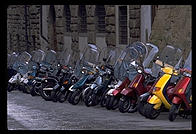
Transportation
in Venice by Philip Greenspun
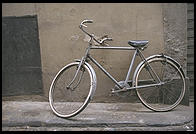
"You think an Italian is going to let a machine tell him what to do?" asked my friend Roberto as he drove through a red light in downtown Torino. It was evening and he had stopped first, but still it came as a shock to my 19-year-old American psyche. It never really hit me how bad things were until my friend Francesca repeated some words of advice from her driving instructor: "don't worry about the rules. When you see a space, go. The important thing is to get there. The end is what matters, not the means."
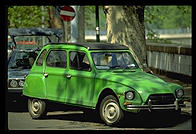
Driving the backroads is a pleasure. The autostrade are less relaxed than American Interstates but more interesting; speed limits and tolls depend on your engine size. Driving in cities is a chore. Remember that dividing lines are merely suggestions.
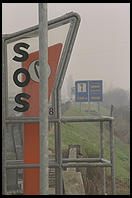
Fiat contributes tremendously to the entertainment of driving in Italy. Whatever they saved on engineering and quality control they spent on buying government influence and protection from imports. Consequently, Fiat accounts for a high percentage of vehicles on the road, many of which are little larger than American lawnmowers. Even in wealthy neighborhoods, the sight of a hapless driver pushing his useless, usually fairly new, car off the road is a common one. Every two or three exits along the highways you see signs offering Fiat service.
 My
encounter with Nicoletta and Fabio, two 23-year-old students, in a
Cortina shop was typical. "We live with our parents in Udine and wanted
to get a away by ourselves for a few days. Fabio's Fiat broke down
coming here from Misurina. This was our first day but the vacation is
over now. It is the second time this has happened to us." Fabio chimed
in, "it was 170,000 for the tow and will be one million lire to repair
the transmission." Our conversation was cut short when Nicoletta's
parents arrived, having driven 2.5 hours through a steady rain and snow.
Think about that cultural difference. If my Dodge Caravan should die
2.5 hours from my parents house, I'm sure they would do a very careful
job of researching the Greyhound Bus schedule for me.
My
encounter with Nicoletta and Fabio, two 23-year-old students, in a
Cortina shop was typical. "We live with our parents in Udine and wanted
to get a away by ourselves for a few days. Fabio's Fiat broke down
coming here from Misurina. This was our first day but the vacation is
over now. It is the second time this has happened to us." Fabio chimed
in, "it was 170,000 for the tow and will be one million lire to repair
the transmission." Our conversation was cut short when Nicoletta's
parents arrived, having driven 2.5 hours through a steady rain and snow.
Think about that cultural difference. If my Dodge Caravan should die
2.5 hours from my parents house, I'm sure they would do a very careful
job of researching the Greyhound Bus schedule for me.
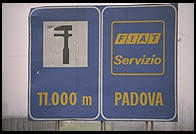
At a dinner party I asked the assembled Italians why they didn't "get over it and buy a Honda." They responded "how would we get parts?" When I told them that American and Japanese cars normally go at least 100,000 kilometers before requiring serious repairs, they were incredulous.
Finally, considering that Italians drive around like maniacs in 750 cc tin cans, you'd think they'd wear seat belts, which are required by law. "I got in the habit of wearing mine," Francesca explained, "but people were laughing at me." Rachele noted that "you are just as likely to be killed by the seat belt as saved because you could be trapped in the car after an accident." [The death rate per passenger mile in Italy is about four times that of Britain or Germany.]

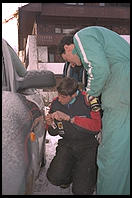 Last time I rented a car in Italy, it was from Avis at the Venice
airport. Before discounts, the weekly rate was about $600 for a small Opel
hatchback. It was impossible to waive the insurance even if one paid with a Visa
Gold card ("this is Italy," the clerk said). When I picked up the car, it had
34,000 kilometers on the clock and a cracked windshield. As soon as I got to
Cortina where it was a few degrees below freezing, the door lock froze. Every
time I wanted to use the car, I had to heat the key with matches. Eventually the
key broke in half and I learned a whole new set of Italian words (none of which
one could learn at Berlitz) while watching the local mechanics spend an hour
drilling the lock out. Once they opened the car, I had my luggage but not a
working vehicle. Avis said I'd have to come back to Venice or pay $150 to have a
replacement car brought to Cortina.
Last time I rented a car in Italy, it was from Avis at the Venice
airport. Before discounts, the weekly rate was about $600 for a small Opel
hatchback. It was impossible to waive the insurance even if one paid with a Visa
Gold card ("this is Italy," the clerk said). When I picked up the car, it had
34,000 kilometers on the clock and a cracked windshield. As soon as I got to
Cortina where it was a few degrees below freezing, the door lock froze. Every
time I wanted to use the car, I had to heat the key with matches. Eventually the
key broke in half and I learned a whole new set of Italian words (none of which
one could learn at Berlitz) while watching the local mechanics spend an hour
drilling the lock out. Once they opened the car, I had my luggage but not a
working vehicle. Avis said I'd have to come back to Venice or pay $150 to have a
replacement car brought to Cortina.
I ended up taking a $200 taxi ride to Bolzano, the nearest Avis office. Once there they supplied me with an even tinier Ford Fiesta bearing the "international 'no radio' sign" (a bundle of wires protruding from the dashboard). When I got to Verona, I tried to trade in the Fiesta, which was too small for my luggage. Avis had a few decent-sounding cars, but they were in a slighly more expensive group than the one I'd originally rented, so they refused to give one to me. I was instead presented with a Fiat with 43,000 kilometers, a deep foot-long scratch in the windshield right in front of the driver, and a big scrape on the passenger side door. "Take it or leave it," the clerk said when I asked for something that might have a chance of passing inspection in Massachusetts. I took it.
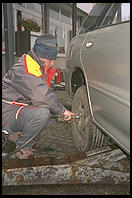 The next day I drove to Vicenza where it started to snow. I discovered that the
front defogger worked but feebly and the rear defogger not at all. If you tried
to use the engine to control the car's speed going down hills, it would stall,
lock the front wheels, and send the car spinning out of control until you
remembered to put the clutch in. Hiding behind a snowplow, I limped back to
Verona at about 60 kph, at which speed the steering wheel shook violently. By
promising to pay big bucks, I traded the Fiat for a small Mitsubishi station
wagon with 31,000 kilometers. By the time I got around to using the Mitsubishi,
all of the air from the right rear tire had escaped through a slow leak.
The next day I drove to Vicenza where it started to snow. I discovered that the
front defogger worked but feebly and the rear defogger not at all. If you tried
to use the engine to control the car's speed going down hills, it would stall,
lock the front wheels, and send the car spinning out of control until you
remembered to put the clutch in. Hiding behind a snowplow, I limped back to
Verona at about 60 kph, at which speed the steering wheel shook violently. By
promising to pay big bucks, I traded the Fiat for a small Mitsubishi station
wagon with 31,000 kilometers. By the time I got around to using the Mitsubishi,
all of the air from the right rear tire had escaped through a slow leak.
Guidebooks say that it is cheaper to book a rental car in advance from the U.S., but I haven't found that to be true. Given the jalopies that pass for rental cars and the weak support once you're on the road, I strongly recommend making multiple reservations and scrutinizing all the cars you can before accepting one.
Italians love mopeds enough that you'll want to make sure that your hotel is in a very quiet street and has double or triple windows for sound insulation. Personally, I only find mopeds useful for photography....
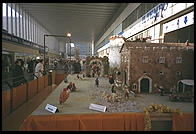 In December 1995, I tried to buy a train ticket to Florence in the Rome station.
I stared at the Visa and Mastercard symbols on the ticket booth for twenty
minutes while I waited in line. When I got to the front, I found that only
Italian Visa and Mastercards were accepted. Naturally, the station had
no cash machines and the bank was closed.
In December 1995, I tried to buy a train ticket to Florence in the Rome station.
I stared at the Visa and Mastercard symbols on the ticket booth for twenty
minutes while I waited in line. When I got to the front, I found that only
Italian Visa and Mastercards were accepted. Naturally, the station had
no cash machines and the bank was closed.
For my return trip to Rome, I arrived at the station in Florence 20 minutes ahead of the train I'd booked a seat on. I spent 10 minutes fruitlessly searching for a trolley to cart my 100 lbs of luggage from the curb to the train. Lines at the ticket selling windows were too long so I lugged my bags to a high-tech ticket vending machine. It didn't like the last 10,000 lire note nor any of the other ones I got in exchange from helpful passersby. Finally, a woman told me that I could buy a ticket on the train if I paid extra. I ran with my bags to the platform to find the train pulling out.
I lugged my bags to the ticket vending booth and bought a ticket. The clerk told me the next train to Rome was in two hours but he couldn't make a reservation for me; I had to go to the reservations counter. I lugged my bags to the taxi rank and waited a few minutes until I got a trolley, then wheeled them back to the reservations counter. On the way there, I noticed that the schedule showed a train leaving in 30 minutes but an abbreviation seemed to indicate that one needed reservations (it also showed another Inter-City leaving in only an hour). I took a number in the reservations area, where 20 people were ahead of me. One of them was a group of American kids who had taken two numbers. They gave me one and I went up to inquire about that train.
"It's the Pendolino," the clerk said in Italian. "You have to go to the Pendolino office by platform 16." I went about 300 yards to the office, which was a glass-enclosed space that could have been on a different planet from the rest of the station, where a gypsy camp atmosphere prevailed. I was the only customer in the lounge and after one minute had paid my 10,000 lire supplement and was on my way over to platform 13 and the Pendolino. I made it with four minutes to spare.
My car on the Pendolino was entirely non-smoking, about half full on this Saturday before Christmas (December 23), and resembled an airplane cabin. The seats are rather tight if you've been eating like an American and the legroom is about right for someone 5'6" tall. Inspired by the constantly ringing cellular phone of the executive behind me, I was going to fold down the tray table and work but ended up talking the whole 90 minutes to Rome with Luca, a Napolitano studying business in Milan. As we pulled into the Rome station at about the same time as the Inter-City train that I'd missed, I used his cell phone to tell my friends in Rome that I'd be at their house in half an hour.
There were no trolleys to be had so I lugged my bags out to the curb where a man wearing an "official tourist guide" badge offered me "a taxi" to my Piazza Istria for a mere 40,000 "because of the holiday." I replied, "I'm foreign but not stupid." I took one of the readily available cabs and paid 15,000 (9,000 on the meter plus a mysterious charge for the bags, which is apparently legit).
So what did I learn? The trains basically do run on time. You can't count on finding a porter or a trolley if you're in a hurry. You'll need to stand on line to do almost anything in a train station except get on a train. The trains themselves are pretty fast, frequently scheduled, and reasonably priced.
If you don't like playing gypsy, it is best to go to a travel agent displaying the FS symbol and get everything taken care of in advance.
AlItalia flies more or less everywhere in Italy from hubs in Rome and Milan. AlItalia is the easiest way to get to Italy also, with non-stop flights from Boston, New York, etc.
It can cost you big time to get a cab from the airport. In Rome, budget 65,000 lire to get to the center unless you are traveling light enough to take the public bus or train.